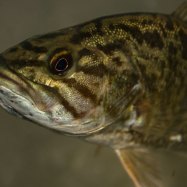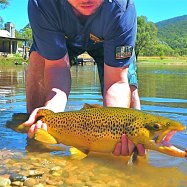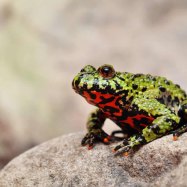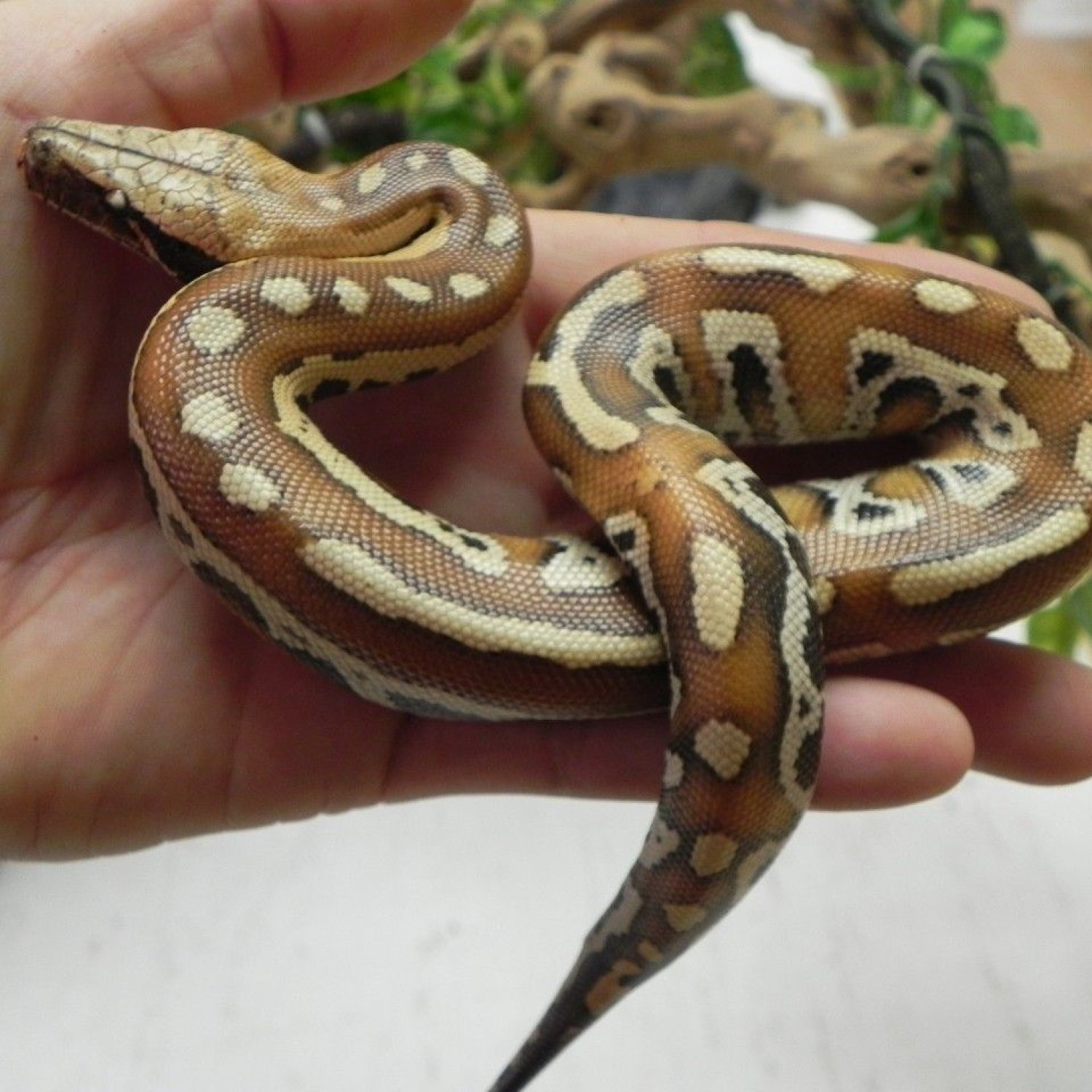
Blood Python
4 to 6 feet
The Blood Python, found in Southeast Asia, is a stunning addition to any reptile collection. These serpents can grow up to 6 feet long, with a muscular and cylindrical body shape that makes them excellent hunters. As part of the Pythonidae family, they are non-venomous and feed on a diet of small mammals and birds. Keepers should be aware of their adult size and provide ample space for their natural behavior and comfort. #BloodPython #SoutheastAsia #Pythonidae
Animal Details Summary:
Common Name: Blood Python
Kingdom: Animalia
Habitat: Forests, swamps, and grasslands
A Closer Look at the Magnificent Blood Python: The Jewel of the Python World
When we think of snakes, it's easy to conjure up images of dangerous and venomous creatures. However, there is one snake that stands out from the rest with its striking appearance and unique characteristics - the Blood Python. From its vibrant coloration to its slow and deliberate movements, the Blood Python is a true gem of the reptile world.The Blood Python, scientifically known as Python brongersmai, is a beautiful and fascinating species of snake that belongs to the squamate order of reptiles Blood Python. Known for their solid reddish-brown coloration, the Blood Python is commonly found in the forests, swamps, and grasslands of Southeast Asia. Specifically, they can be found in countries such as Indonesia, Malaysia, and Thailand. They are also known as Red Blood Pythons or Brongersma's Short-tailed Pythons. This spectacular creature has captured the attention and hearts of many reptile enthusiasts, making them a popular choice for snake owners.
The Blood Python's Classification
Before we dive into the beauty and characteristics of the Blood Python, let's first take a look at its classification. Like all living things, the Blood Python is classified based on its kingdom, phylum, class, order, family, genus, and species. Here's a quick breakdown of the Blood Python's classification:- Kingdom: Animalia (Animal)
- Phylum: Chordata (Chordates)
- Class: Reptilia (Reptiles)
- Order: Squamata (Squamates)
- Family: Pythonidae (Pythons)
- Genus: Python
- Species: brongersmai (Brongersma's Short-tailed Python)
As you can see, the Blood Python belongs to the Pythonidae family, which is home to some of the most recognized species of snakes, including the reticulated python and the Burmese python. However, what sets the Blood Python apart from its family members is its distinctive coloration and unique characteristics.
The Habitat and Distribution of the Blood Python
The Blood Python is native to Southeast Asia, specifically in countries like Indonesia, Malaysia, and Thailand Bonobo. They can be found in varied habitats, from forests and swamps to grasslands and agricultural fields. In the wild, they are often found near water bodies and prefer to spend most of their time in burrows or under logs, rocks, and debris. They are also known to be semi-aquatic, meaning they can swim and spend a considerable amount of time in the water.However, due to the increasing demand for these beautiful creatures, they are also bred and sold as exotic pets all over the world. As a result, they can now be found in many countries outside their native range. However, it's essential to note that the Blood Python is still listed as a threatened species due to habitat destruction and over-harvesting for the pet trade. Therefore, it's crucial to ensure that these magnificent creatures are ethically bred and sourced to preserve their population in the wild.
The Blood Python's Feeding Method and Diet
As with all pythons, the Blood Python is a carnivorous species, meaning that they primarily feed on other animals. In the wild, they are known to prey on a variety of creatures, including rodents, birds, and even larger mammals such as deer and monkeys. As pets, they are usually fed frozen-thawed rodents, such as rats and mice. However, it's critical to ensure that the prey is no larger than their girth to avoid any digestion issues or injury.The blood python's feeding method is quite fascinating. Unlike other snakes that use their venom to immobilize their prey, the Blood Python uses its powerful constriction to suffocate its prey. It uses its muscular body to wrap around its prey, squeezing the life out of it. This slow and deliberate method ensures that the prey doesn't escape, making it an efficient hunter.
The Magnificent Coloration of the Blood Python
Arguably, the most striking feature of the Blood Python is its stunning coloration. They have a solid reddish-brown coloration, with some individuals having lighter or darker shades. This unique coloration is where the Blood Python gets its name, as it resembles the color of blood. However, there are also other color variations of the Blood Python, such as albino, caramel albino, and granite, making them even more appealing to snake enthusiasts.The vibrant coloration of the Blood Python serves several purposes in the wild. First, it provides them with camouflage, allowing them to hide and blend in with their surroundings. This is especially beneficial for the species as they are primarily ambush predators. The bright red color also serves as a warning to potential predators, as they are known to be quite aggressive when threatened.
The Body Shape and Size of the Blood Python
The Blood Python has a relatively stout and muscular body with a cylindrical shape. Compared to other pythons, they have a thicker body with a shorter tail, which is where they get their other name, Brongersma's Short-tailed Python. They also have a distinct wedge-shaped head and a broad jaw, which allows them to swallow their prey whole easily.On average, adult Blood Pythons can reach a length of 4 to 6 feet, with some individuals even growing up to 8 feet. Their girth is also quite impressive, with some individuals having a diameter of up to 6 inches. Their size, coupled with their striking coloration, makes them a visually impressive and intimidating species.
The Blood Python's Movement and Speed
Due to their muscular body and stout shape, the Blood Python is not a fast-moving snake. In fact, their movement is quite slow and methodical, often referred to as "banana-peeling." This way of moving is where the snake alternates between coiling and uncoiling its body as it moves forward. This slow and deliberate movement allows them to conserve energy and avoid any unnecessary risks. However, when threatened, the Blood Python can move quicker, their top speed reaching up to 2 to 4 miles per hour.Caring for the Blood Python as a Pet
With their striking coloration and unique characteristics, it's no wonder why the Blood Python is a popular choice for snake enthusiasts looking for a new pet. However, it's essential to understand that these beautiful creatures require proper care and husbandry to thrive in captivity. Here are some key factors to consider if you are thinking of owning a Blood Python as a pet:- Enclosure: Blood Pythons require a large and spacious enclosure to accommodate their size and need for exercise. A 40-gallon tank is the minimum requirement for a young Blood Python, while adults need a 60-gallon tank or larger.
- Temperature and Humidity: Blood Python's need a warm and humid environment, mimicking their natural habitat. A basking spot should be maintained at a temperature of 90-92°F, while the cool end of the enclosure should be around 82-85°F. The humidity levels should be kept between 60-70%.
- Diet: As mentioned earlier, Blood Pythons are carnivorous and require a diet of frozen-thawed rodents, fed once every one to two weeks, depending on their size.
- Handling: Blood Pythons are known to have an aggressive temperament, especially when they feel threatened. Therefore, handling them should be done with caution and only by experienced snake owners.
Conclusion
The Blood Python is undoubtedly a mesmerizing and unique species of snake. From their vibrant coloration to their slow and deliberate movements, these creatures are a true wonder of the python world. However, their increasing popularity also puts them at risk in the wild, making it crucial for us to ensure their conservation and ethical ownership as pets. Hopefully, with the right education and awareness, this magnificent species will continue to thrive and captivate our hearts for generations to come.

Blood Python
Animal Details Blood Python - Scientific Name: Python brongersmai
- Category: Animals B
- Scientific Name: Python brongersmai
- Common Name: Blood Python
- Kingdom: Animalia
- Phylum: Chordata
- Class: Reptilia
- Order: Squamata
- Family: Pythonidae
- Habitat: Forests, swamps, and grasslands
- Feeding Method: Carnivorous
- Geographical Distribution: Southeast Asia
- Country of Origin: Indonesia, Malaysia, Thailand
- Location: Southeast Asia
- Animal Coloration: Solid reddish-brown coloration
- Body Shape: Cylindrical and muscular
- Length: 4 to 6 feet
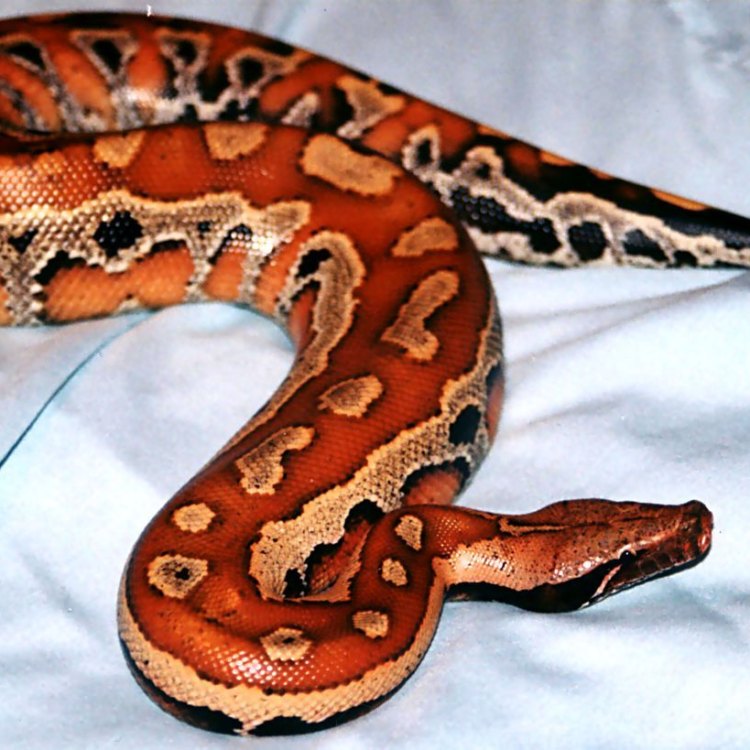
Blood Python
- Adult Size: 6 to 9 feet
- Average Lifespan: 20 to 30 years
- Reproduction: Oviparous
- Reproductive Behavior: Mating occurs on land and females lay eggs
- Sound or Call: Hissing when threatened
- Migration Pattern: Non-migratory
- Social Groups: Solitary
- Behavior: Nocturnal and secretive
- Threats: Habitat loss and illegal pet trade
- Conservation Status: Vulnerable
- Impact on Ecosystem: Apex predator in its habitat
- Human Use: Kept as exotic pets
- Distinctive Features: Solid reddish-brown coloration and triangular head
- Interesting Facts: The name 'Blood Python' refers to the snake's deep red coloration
- Predator: Large birds of prey, crocodiles, and other large snakes
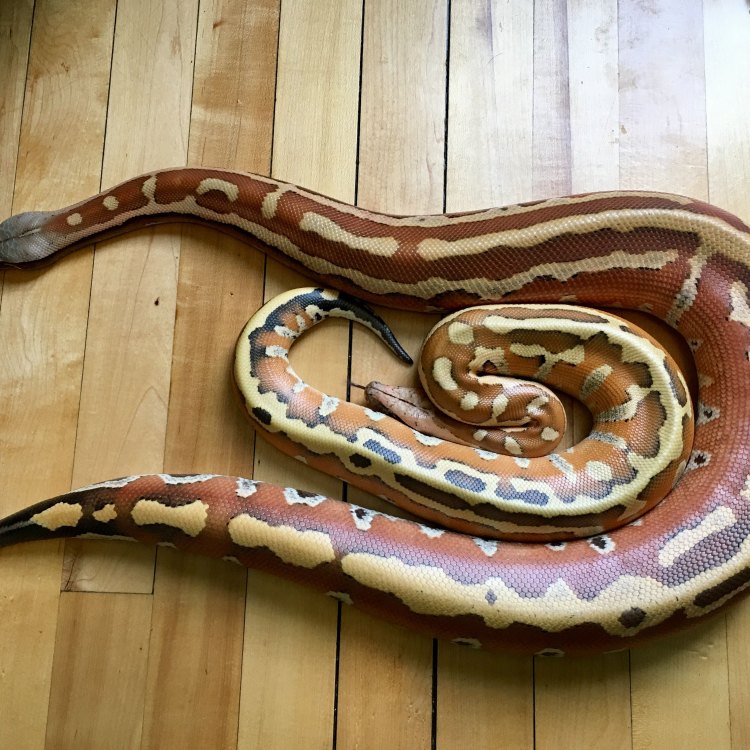
Python brongersmai
The Fascinating World of Blood Pythons: An Apex Predator in Danger
In the vast and diverse world of reptiles, one species stands out for its unique coloration and behavior – the Blood Python. Also known as the Red Blood Python or Red Short-tailed Python, this species is native to the dense rainforests and swamps of Southeast Asia.Despite their intimidating name, Blood Pythons are not vicious creatures, but rather shy and elusive. In fact, they are heavily threatened by habitat loss and the illegal pet trade PeaceOfAnimals.Com. In this article, we will dive deep into the world of Blood Pythons, exploring their distinctive features, behavior, and their role in the ecosystem.
Physical Appearance
Blood Pythons are large and heavy-bodied snakes, with a stout build and short tails. They can reach an adult size of 6 to 9 feet, making them one of the smaller python species. However, don't let their size fool you, as these snakes are strong and muscular, capable of taking down large prey.Their most distinctive feature is their solid reddish-brown coloration, which gives them their name. This deep red color extends from their head to their tail, and is often speckled with black markings. Some individuals may also have a yellow or green tint, depending on their natural habitat.
Another distinguishing feature of Blood Pythons is their triangular-shaped head, with a wide mouth and sharp teeth. This allows them to deliver a powerful bite to subdue their prey Bassetoodle. Their eyes have vertical pupils, giving them excellent vision, especially in low light conditions.
Behavior and Reproduction
Blood Pythons are solitary creatures, preferring to live and hunt alone. They are nocturnal and secretive, spending most of their time hiding in burrows or under logs and debris. They are also known to be good climbers, using their strong bodies and sharp claws to navigate through trees in search of prey.Mating for Blood Pythons occurs on land, with males competing for the attention of females through physical combat. Once a female has chosen a mate, she will lay a clutch of up to 12 eggs, which she will then guard until they hatch. The eggs usually hatch after 2 to 3 months, and the female will immediately leave the area, leaving her offspring to fend for themselves.
Threats and Conservation Status
The biggest threat to Blood Pythons is habitat loss due to deforestation and human development. They require a large territory to hunt and thrive, and with the destruction of their natural habitats, their numbers have declined significantly. They are also often hunted for their meat, skin, and body parts, which are used in traditional medicine.Another significant threat to Blood Pythons is the illegal pet trade. These snakes are highly sought after by reptile enthusiasts due to their unique color and impressive size. However, many individuals are taken from the wild, leading to a decline in their population.
As a result, the International Union for Conservation of Nature (IUCN) has listed Blood Pythons as Vulnerable on the Red List of Threatened Species. This means that their population has decreased by at least 30% over the past 10 years, and they are at high risk of extinction if conservation measures are not implemented.
Role in the Ecosystem
Blood Pythons play a crucial role in their ecosystem as apex predators. As they are capable of taking down large prey such as small deer and pigs, they help regulate their numbers, preventing overpopulation. Without them, there could be a significant imbalance in their habitat, causing disruptions in the food chain.These snakes are also important in nutrient cycling, as their droppings add vital nutrients to the soil, promoting the growth of plants and other organisms. They are also preyed upon by large birds of prey, crocodiles, and other large snakes, serving as a source of food for these predators.
Interesting Facts
The name 'Blood Python' has an interesting origin. It is not because these snakes are aggressive or known for their bloodthirsty nature. The deep red color of their skin is what inspired their name, as it resembles blood. In some parts of Southeast Asia, they are also known as 'Sumatran Short-tailed Pythons' or 'Borneo Short-tailed Pythons'.Blood Pythons are also known for their hissing sound, which they use as a defensive mechanism when threatened. They do not have fangs or venom, but their sharp teeth can still cause harm to their predators or potential threats. However, they are not aggressive snakes and will only use their hissing as a warning before retreating.
Keeping Blood Pythons as Pets
Blood Pythons are often kept as exotic pets, due to their striking color and manageable size. While they can thrive in captivity, they have specific care requirements that potential owners must be aware of. They require a large and secure enclosure with ample hiding spots, a warm temperature gradient, and a balanced diet of rodents and other small prey.However, it is essential to note that owning a Blood Python should not be taken lightly. These snakes can live up to 20 to 30 years, and their care can be challenging and expensive. They also have specific handling requirements, as their bites can be painful and may cause injuries due to their sharp teeth.
In conclusion
In the ever-changing world of reptiles, the Blood Python stands out for its unique coloration and behavior. These snakes play a vital role in their ecosystem as apex predators, but they are heavily threatened by human activities. It is crucial to raise awareness about their conservation and to ensure that they are not overexploited for the exotic pet trade.As we continue to learn more about these fascinating creatures, we must also strive to protect and preserve them for future generations to appreciate. The Blood Python may seem intimidating, but they are an essential part of our ecosystem, and it is our responsibility to ensure their survival.
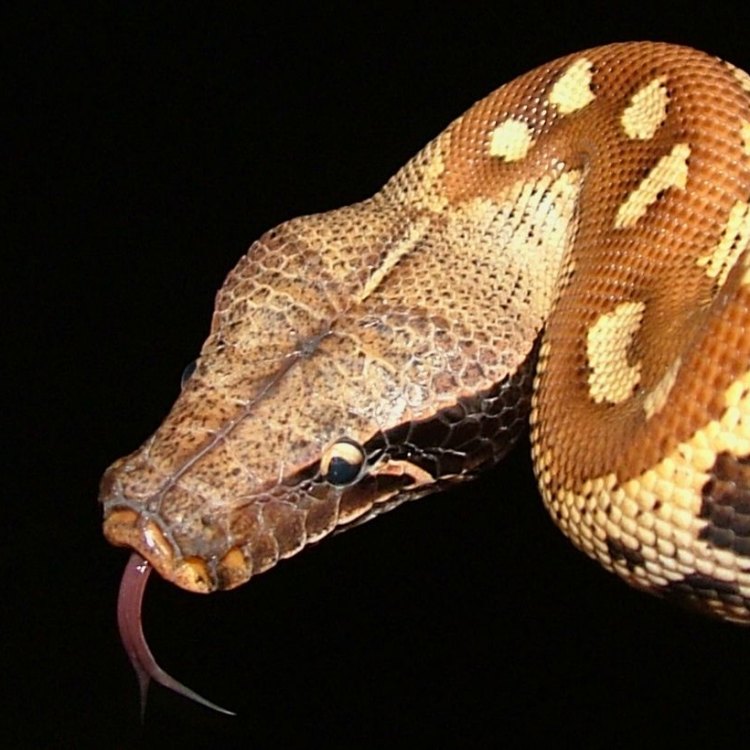
A Closer Look at the Magnificent Blood Python: The Jewel of the Python World
Disclaimer: The content provided is for informational purposes only. We cannot guarantee the accuracy of the information on this page 100%. All information provided here may change without prior notice.


